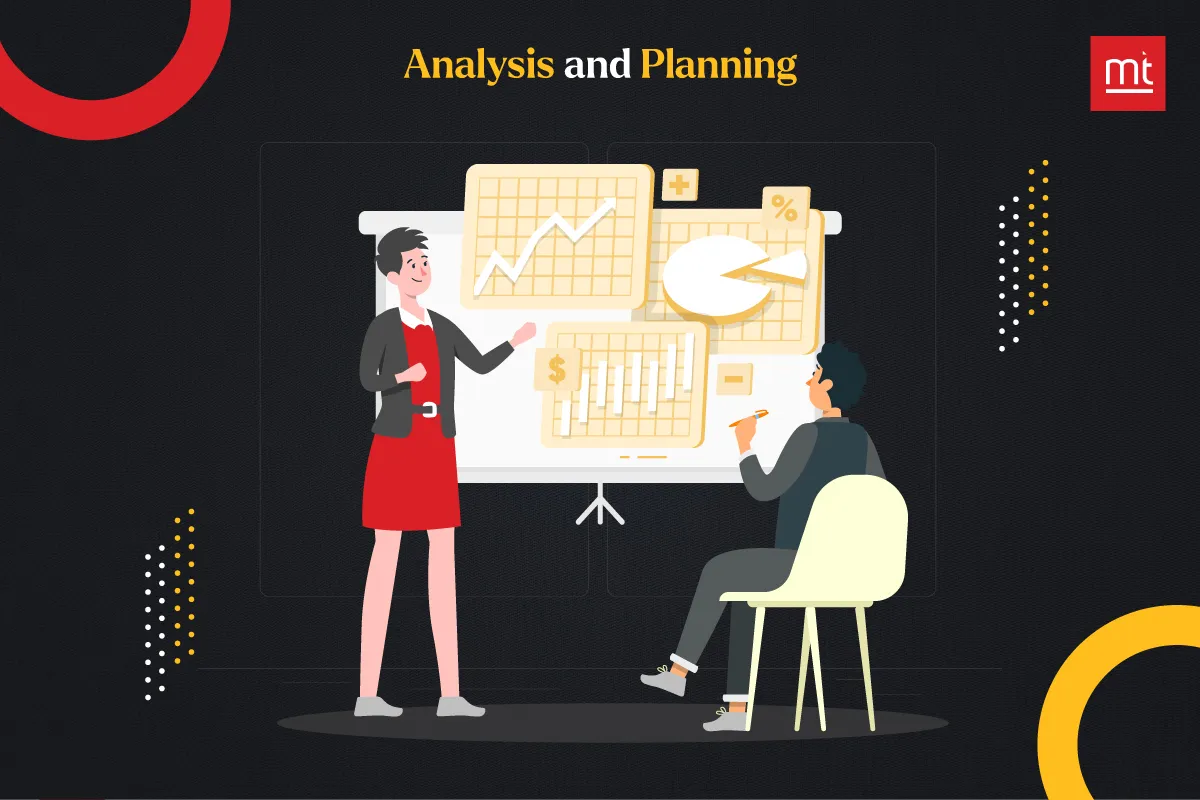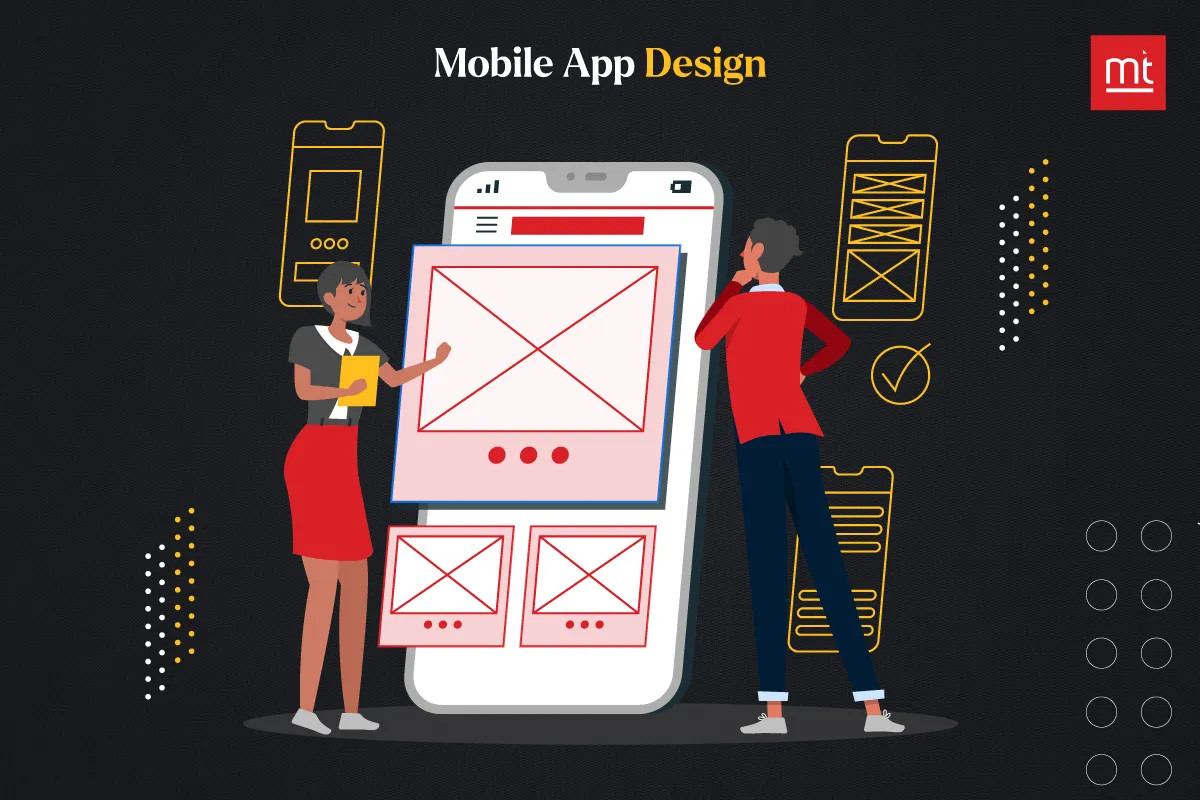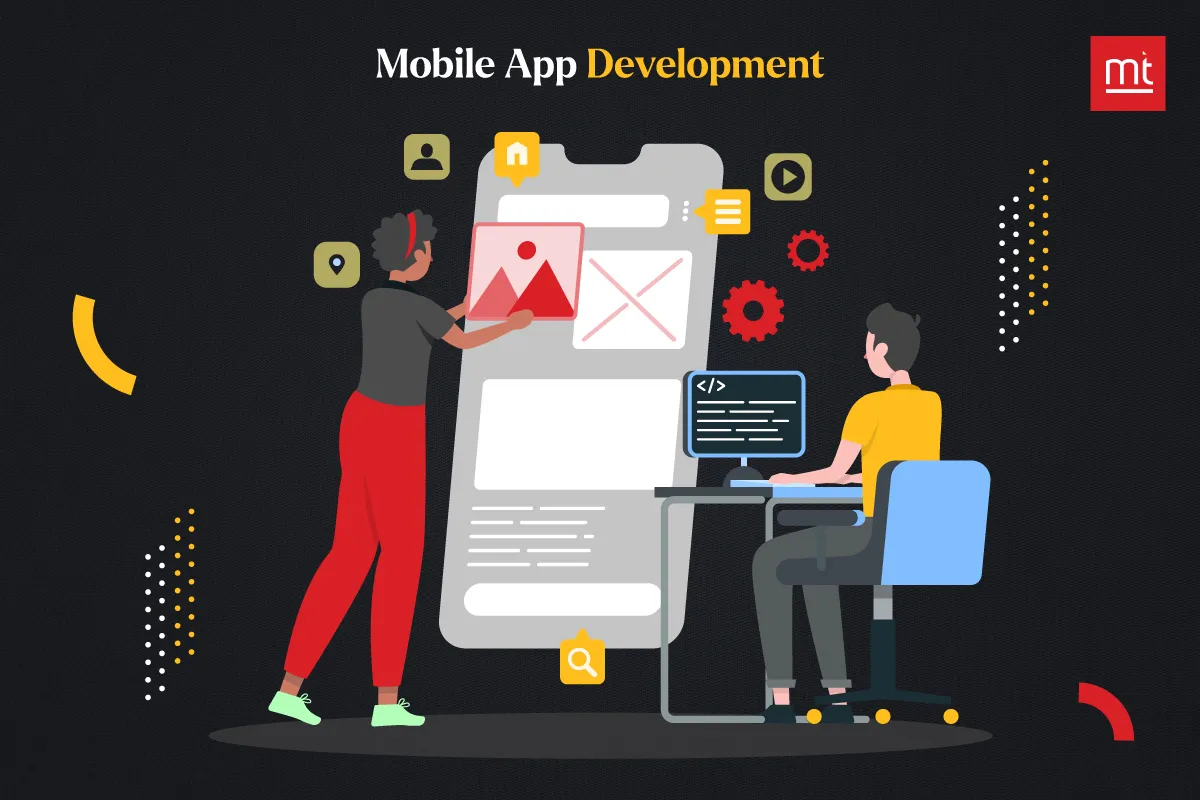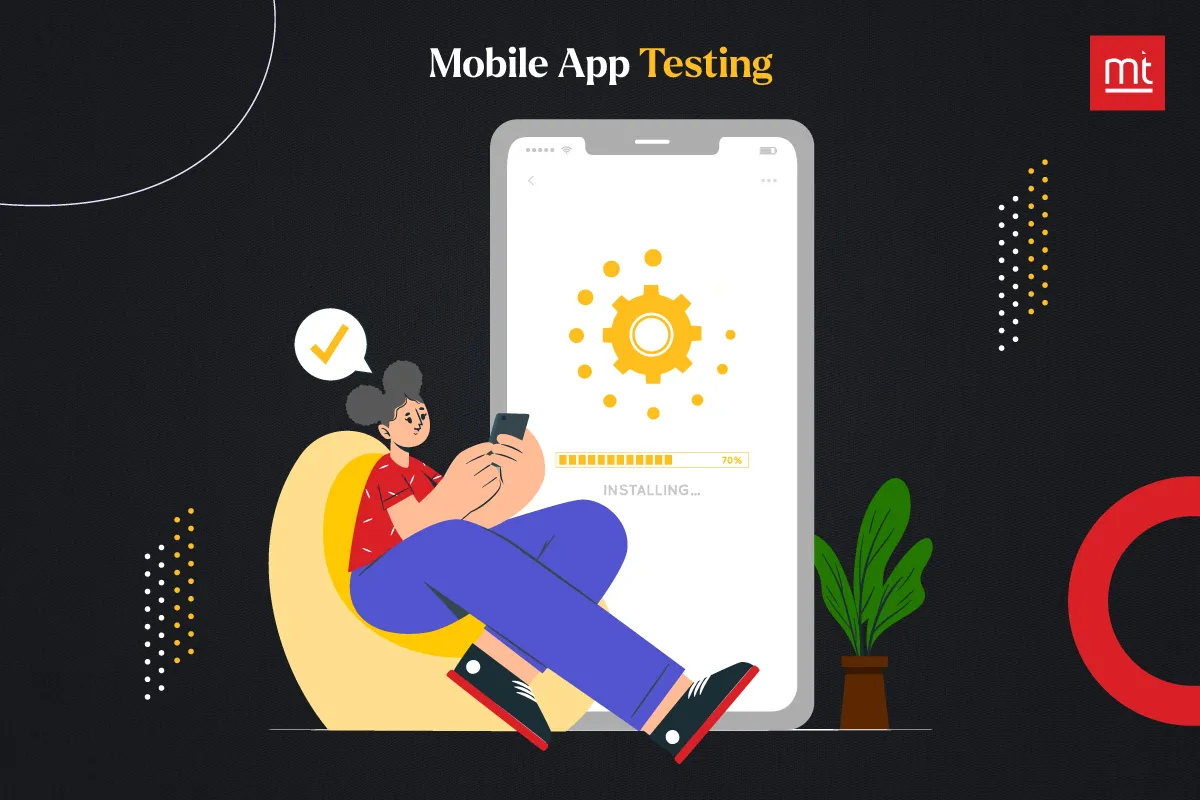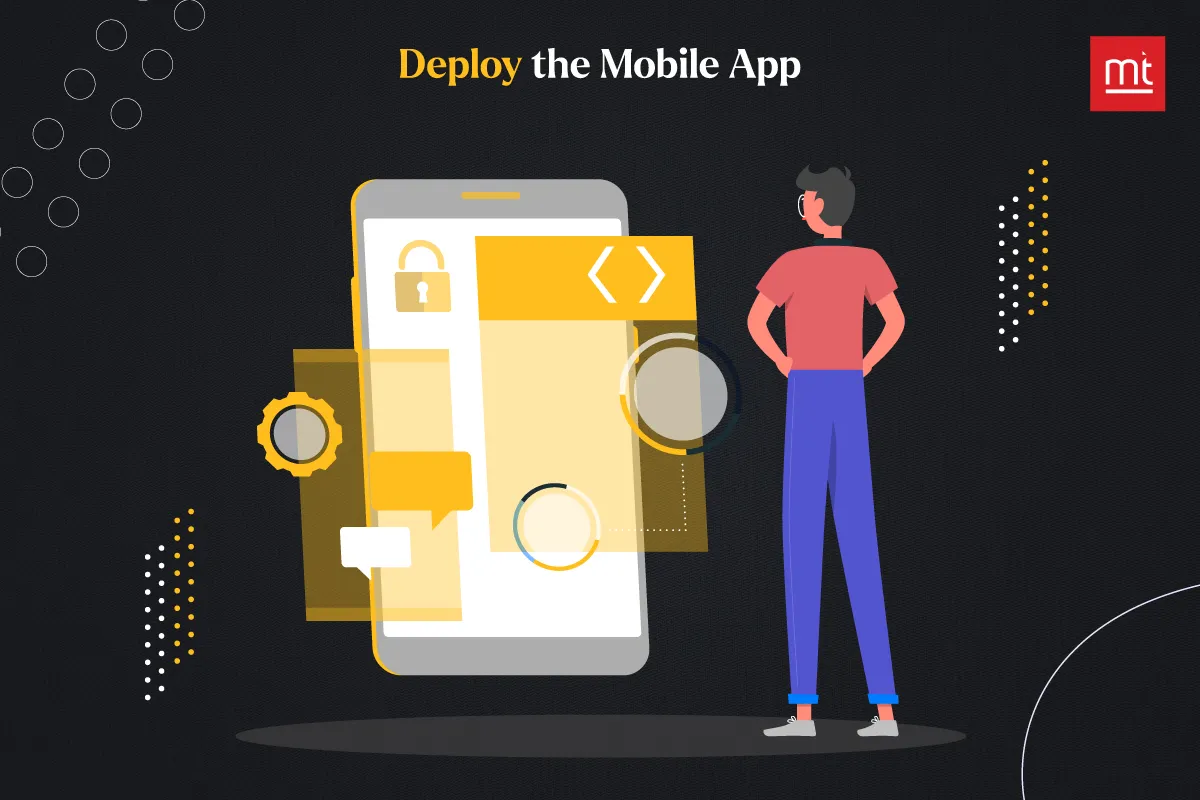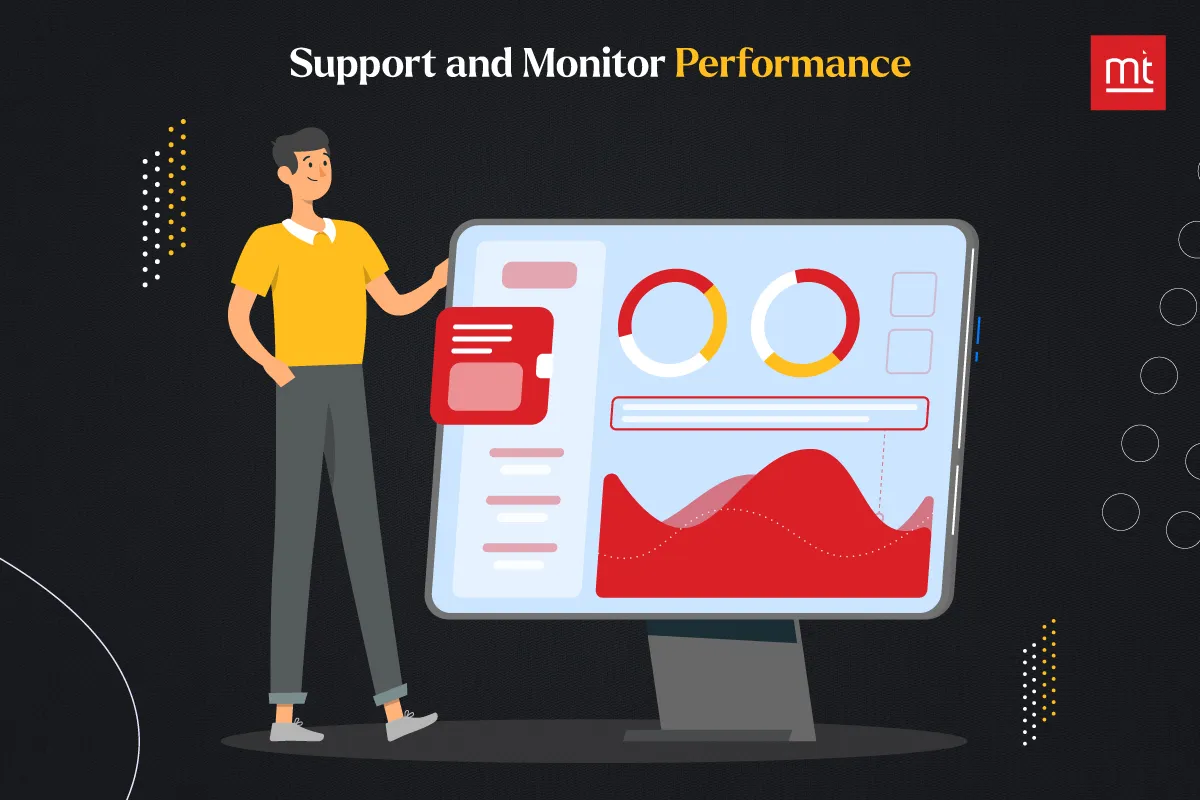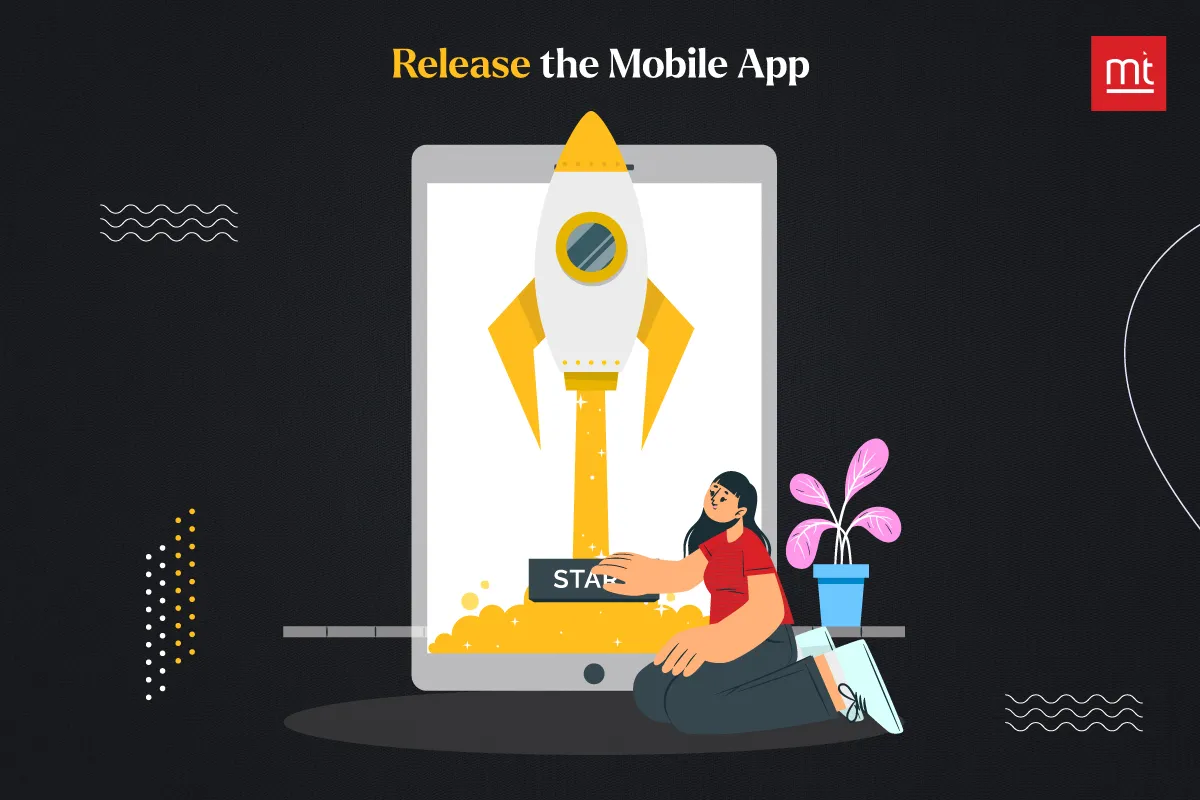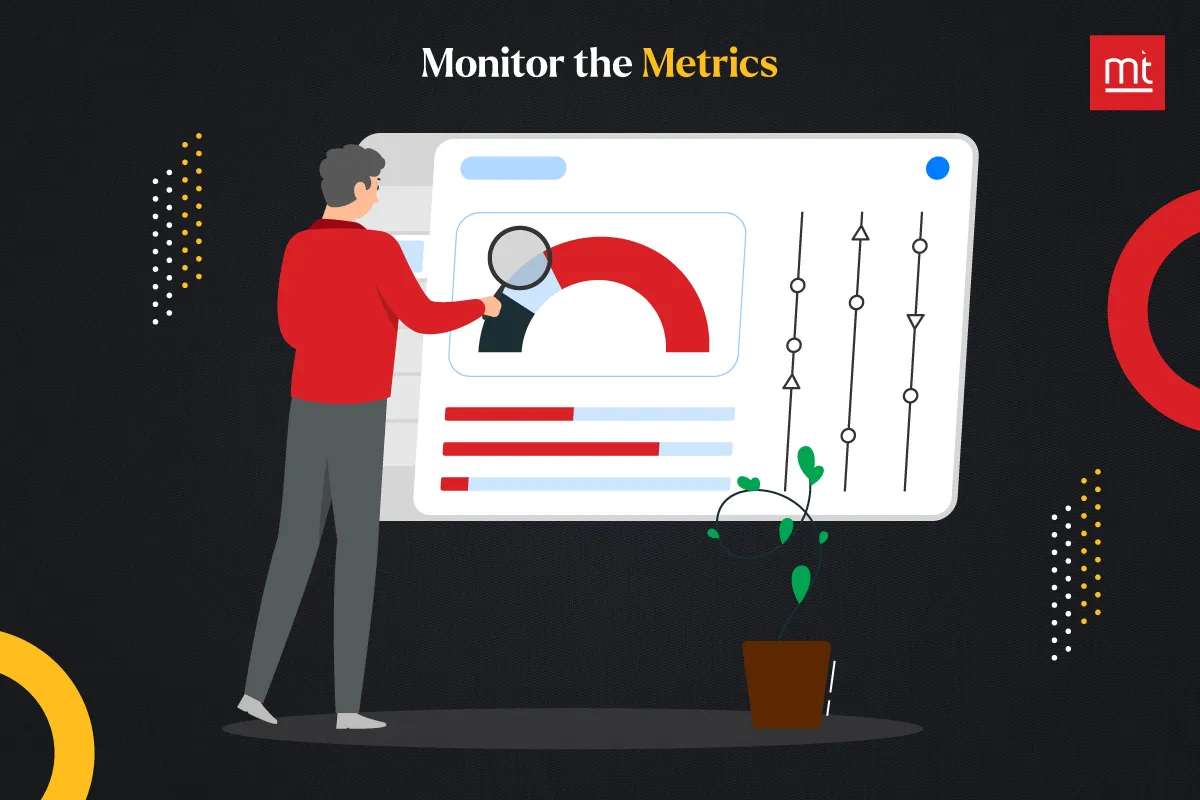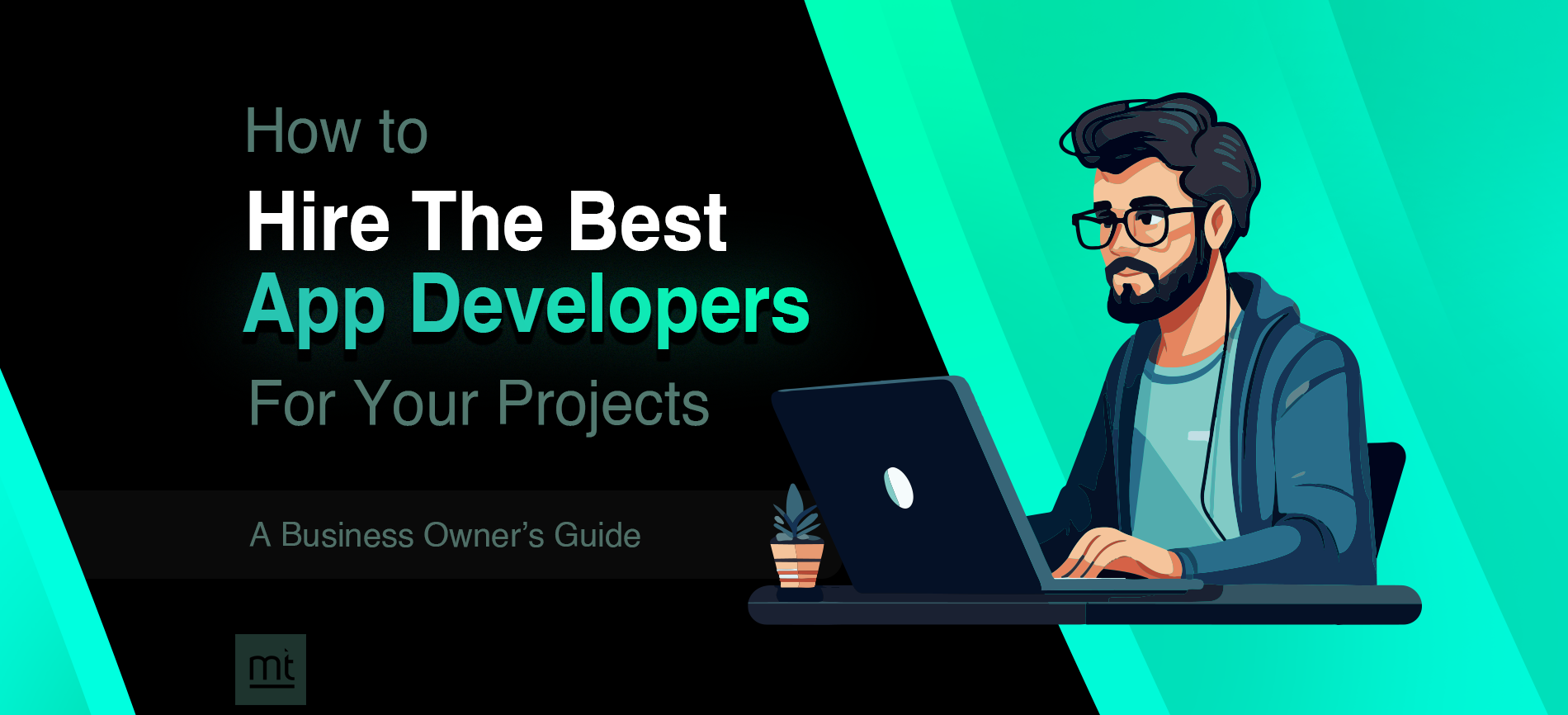Introduction:
According to Statista, 72.6% of the individuals globally will access the Internet via smartphones. This seismic shift in user preferences lays the foundation for another extraordinary projection. Mobile applications will produce approximately $613 billion in revenue by 2025 with mobile games as the primary revenue driver.
This is the era of mobile dominance, and you might be at a crossroads where application development might seem integral to your business presence. If that’s the case, 2024 is undeniably the best year to build your mobile application.
This mobile app development process article will guide you through the top steps you must take to ensure smooth app development and seamless releases. You will get the roadmap to delivering delightful experiences to your users.
Key Steps in the Mobile App Development Process
You must follow all the crucial steps that direct you towards creating an enticing and engaging application. It begins with research and ends with continuous monitoring/improvement.
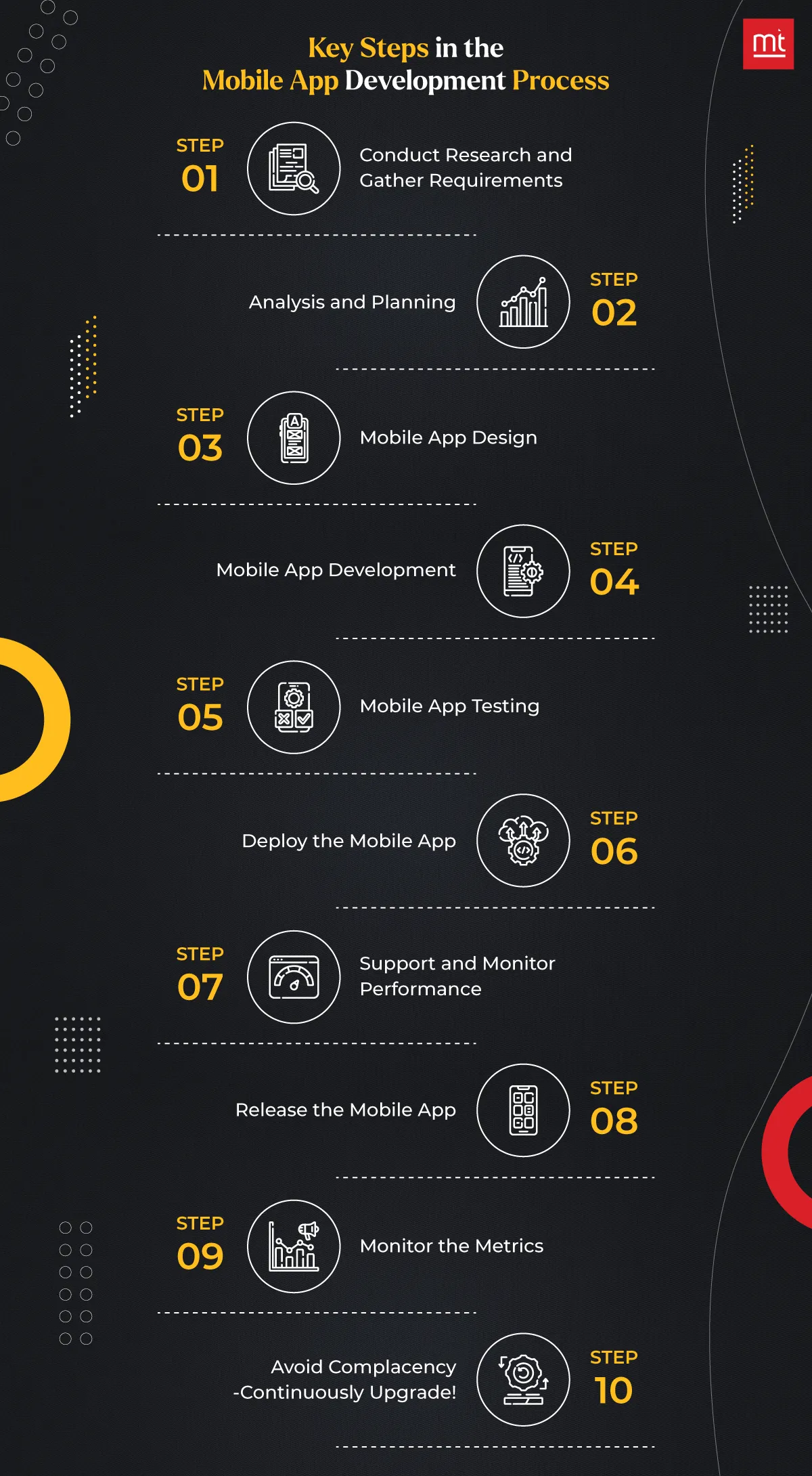
Step 1: Conduct Research and Gather Requirements
Meticulous research and complete requirements gathering can help you build a relevant and progressive mobile application. You must include these critical steps in app development when delivering the outcomes of research
- What do you aim to solve with this application? The purpose is the guiding light for your app development roadmap. Say your app will enable seamless communication. This will set the premise for research and target market definition. You must also ensure you have specific and measurable goals for your application
- It is equally important to understand your target market. The purpose will help define and identify the niche audience. You can use surveys, secondary research guidelines and market research to understand their stand on the mobile app domain
- You must also study the competition in your segment. They will help you realize the existing gas. You can also analyse their strengths, users and concepts to build your idea.
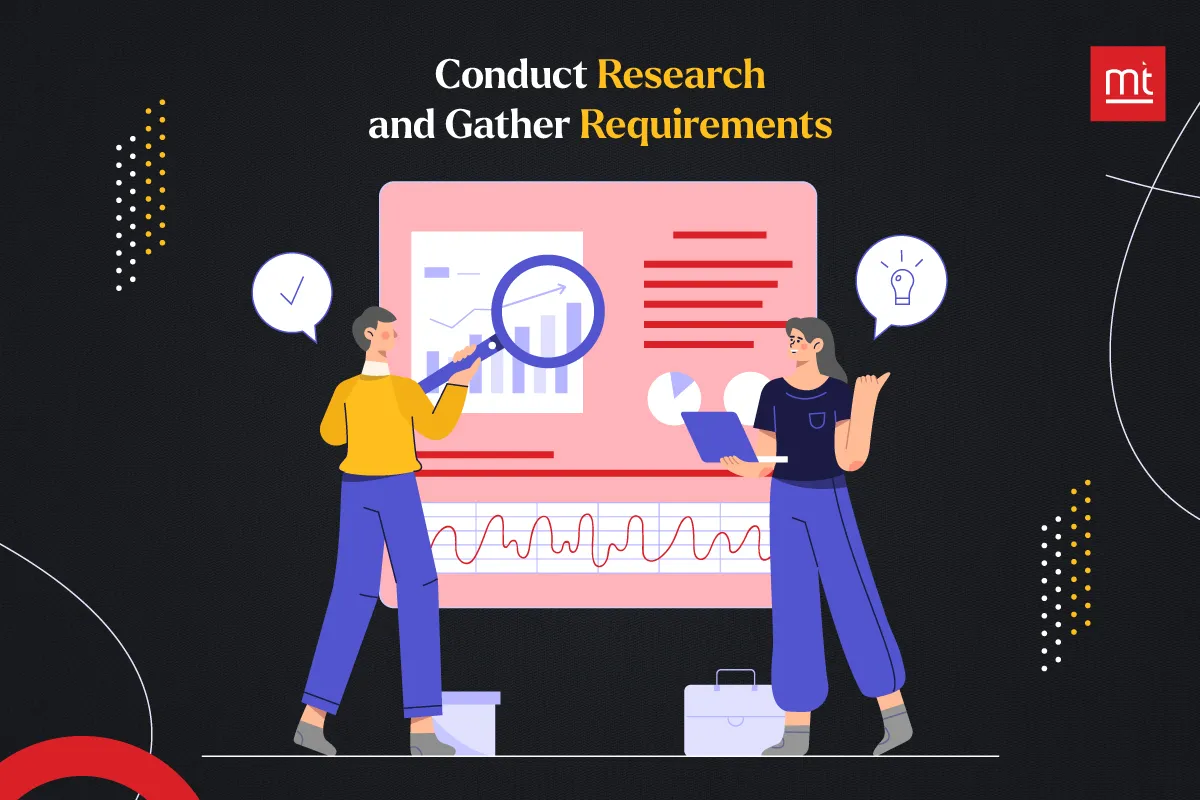
Step 2: Analysis and Planning
Let’s start planning the mobile application. This is the most exciting and crucial part of your mobile app development steps to build an engaging application. You must envision the entire development process and engagement at this point. It will help you determine all aspects of the mobile app to make it usable and efficient.
- The features/ functionality are core to your planning process. What are some of the features that will enhance your user’s abilities with the mobile app? The features should be aligned with your primary vision and the mobile application goals
- Start working on the app layout and design framework. This will help you plan the prototypes better. You can use visual designs to help you define the user experience and interface design. It will also enable the stakeholders to understand the mobile vision better
- You must also plan the technology and tools for mobile app design. The tech stack should be aligned with your goals and ensure smooth development. You should also choose the frameworks and libraries for your business application. You must consider app performance and scalability while making these decisions.
- The approach you take is equally crucial. It is driven by your goals and budget. You can go with native development if you have the budget and performance is the goal. However, if you wish to release a prototype and accelerate time-to-market, you must go with cross-platform.
Step 3: Mobile App Design
The actual design occurs in this phase of the process of mobile app development. You will consider user experience, ideate the narratives and plan for adaptability. The idea is to ensure seamless usage across devices, which can improve the user’s experience and enhance the app’s usability.
- There are design principles to guide your interface design and development. If you are developing for iOS, you must go through the standard guidelines. This will help you choose appropriate colour schemes and typography. It can also help you plan for a more aesthetic and intuitive design. Moreover, you will get the guidance to define the hierarchy
- Before you begin designing the application, consider diving into the UX design. You must build a narrative that can help you extend swift movements. You can use real users to help plan the experience. For instance, check how they move from one screen to another. This will help you create resonance and coherence within the design
- Mapping the user’s journey is crucial. What do users want? The app screen should help them accomplish the defined tasks. You can use this single-line answer to create the touchpoints and interactions. It will also help to dive deeper into their pain points to address the issues.
- When you are defining the user experience design, make sure to conduct a usability test. This will help you identify the issues in the design/functionality. You can address them in the design stage for error-free development.
- Create mockups before you present the final design to the development teams. It will give you a clear understanding of how the app will look. You can make necessary adjustments and refinements at this point.
Step 4: Mobile App Development
This is the soul of your mobile application. It is the development phase where your designs and the interactions come alive. You can view everything you had planned during development. It is the stage where your vision becomes a reality.
- It is vital to choose a robust IDE that can enhance your development abilities. The IDEs can help you plan the code and streamline the process. Code editors, debuggers and automation can expedite the coding process.
- Version control systems are integral to your development process. It will help manage and track all the changes you have made to the code. It is an extensive documentation that facilitates collaboration and quick resolutions. You can remove all the bottlenecks with the VCS
- Your development team must implement the coding best practices. It can help you plan a well-documented and legible code. Moreover, it makes increases your team’s coding efficiency. Lastly, it can help with collaborations and future maintenance.
Step 5: Mobile App Testing
Testing is a crucial part of the app development process to release a bug-free and high-quality application to your users. You will check if the features are aligned with the suggested functionality. Moreover, you will determine the speed and performance of the application at this stage.
- You must choose exclusive automation tools that can increase testing efficiency. It can also help expedite the process with accurate results. Moreover, you get to quickly evaluate the application and address the concerns
- There are a few instances where you need to implement manual testing. You might need this intervention for a detailed subjective evaluation. You can easily combine the automated and manual testing processes for a detailed assessment
- Choose the appropriate testing frameworks that can help structure your testing and organise the results. It can help you adhere to the guidelines and rules. Moreover, the frameworks can enhance your testing efficiency and result reliability.
- You must also conduct the user acceptance test at this stage. UAT can help you determine if the app meets the user’s expectations. It is the litmus test with a closed group of users before releasing it to the market.
Step 6: Deploy the Mobile App
Once you have a bug-free app at your disposal, it is time to release it to your users. As a business owner, this is the most exciting and anxious phase of your mobile app development journey. This is the moment of ultimate truth.
- Ensure you have taken all the suggested app store approvals before deploying the application. You must study the store guidelines and optimize your app for approvals. You must ensure they comply with the guidelines and requirements
- You must also study the testing, security, functionality, design and content guidelines for the store. Ensure your app is designed for all these practices. This will ensure your app is approved and launched to the store.
Step 7: Support and Monitor Performance
The focus shifts from development to monitoring. You are no longer building an app; you are involved with delivering a user-centric application. You must constantly support the users with quick resolutions. Moreover, your team should monitor the performance and improve it.
- Establish support systems to help your users with quick resolutions and answers to queries. You must offer multi-channel support, which includes email, in-app and a dedicated helpdesk. You can also include voice and other mediums
- Your team must continuously monitor the application and address the issues. You must prioritize the bugs and resolve them. In case users report issues, make sure to resolve them first. these updates and fixes can improve the application
- You must also track the performance indicators. Check the app’s usability, track the crashes and monitor the loading speed. You must proactively address these issues for the best outcomes
- Create feedback loops that can help your users share their reviews with you. they can also report issues and offer suggestions. This is a great opportunity space to enhance your app with new features.
Step 8: Release the Mobile App
Your users won’t know of your app until you tell them. So, deploying the app isn’t enough. You must look at a grand release for the application. Think through an effective marketing strategy you can employ to showcase your new application.
Make people interested in the application and share how it will help them in the long run.
- You would have created a marketing and promotion strategy at the planning stage. It is time to execute it. You can use the different marketing channels to intrigue your users. Create a buzz around the application. You can also use the social media and email channels to reach your audience.
- You must also define a PR strategy to launch the application. The press releases that discuss the application can help you be more visible.
- Events are a great way to showcase your new application. This will get more people talking about the application. Moreover, the events will also help users realize the app’s potential. For instance, the events will discuss the features and show use cases for the solution.
- You must ensure your app is easy to discover and use on the app store. Follow the app store optimization guidelines to increase visibility. Your description and title should be catchy. It should sync with your app’s premise. Add high-quality screenshots to entice your users.
- Instead of releasing the app in a single go, plan your rollout. You can have location-based releases or a beta release. A well-crafted strategy can help you garner the best outcomes. It will also help plan for contingencies and incorporate quick responses.
Step 9: Monitor the Metrics
Monitoring your application is crucial to ensure optimal performance. You must continuously monitor the different metrics that showcase the performance, engagement and conversion rates.
- You must constantly decode the user behaviour on the application. Retention rates, session time and other factors can help you understand your users better. It will help plan targeted campaigns and enhance the features.
- You must track the performance of the application. Monitor metrics such as response time and crash rates. This will enable a smooth user experience.
- Check the conversion metrics such as purchases and subscriptions. It will help determine how effective your monetization strategies are.
- Use the feedback loops to listen to your audience. Know why they love or hate your application. Look for enhancement and growth opportunities.
- You must also track the marketing metrics. This will help monitor its effectiveness. You will know which platforms work for your business. it will also help optimize the strategy.
Step 10: Avoid Complacency—Continuously Upgrade!
The tech stack is continuously evolving. If you don’t implement the suggested patches or fix the bugs, your app might be out of the store.
- Update your application with the latest software upgrades. Incorporate the current trends for best usability. Implement the feedback, address the bugs and enhance your app with new features.
- Top-notch security can enable the best outcomes for the application. You must add security patches to mitigate attacks and vulnerabilities. Implement the best security practices and data protection compliances to improve credibility.
- Use advanced strategies such as gamification and promotions to keep the user engaged. You must refine the strategies so that users stay on the app and recommend them to others.
- Your app should be consistent across devices. performance optimization is crucial to ensure this aspect. If the app is fluid and seamless across platforms and devices, it contributes towards a positive experience.
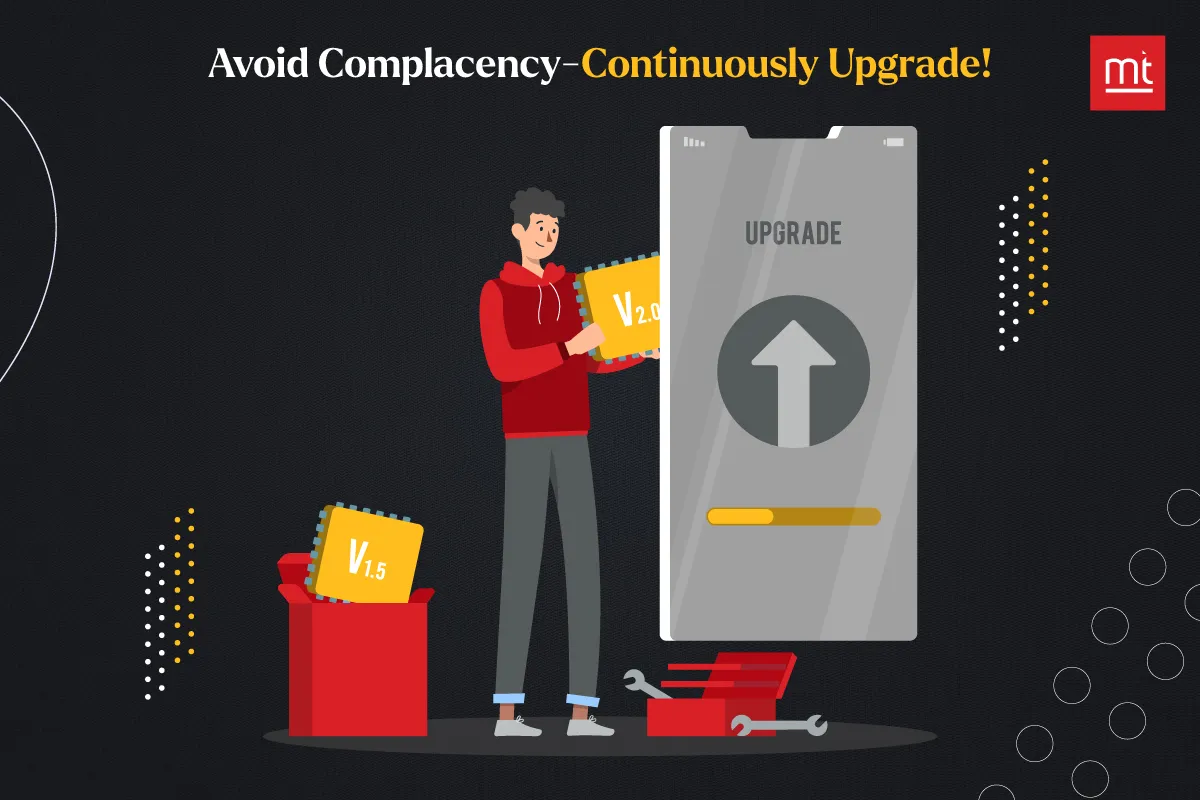
Critical Factors to Evaluate When Embarking on Mobile App Development
You must consider crucial factors that can impact the user’s journey when planning mobile app development. We will discuss a few considerations in this section.
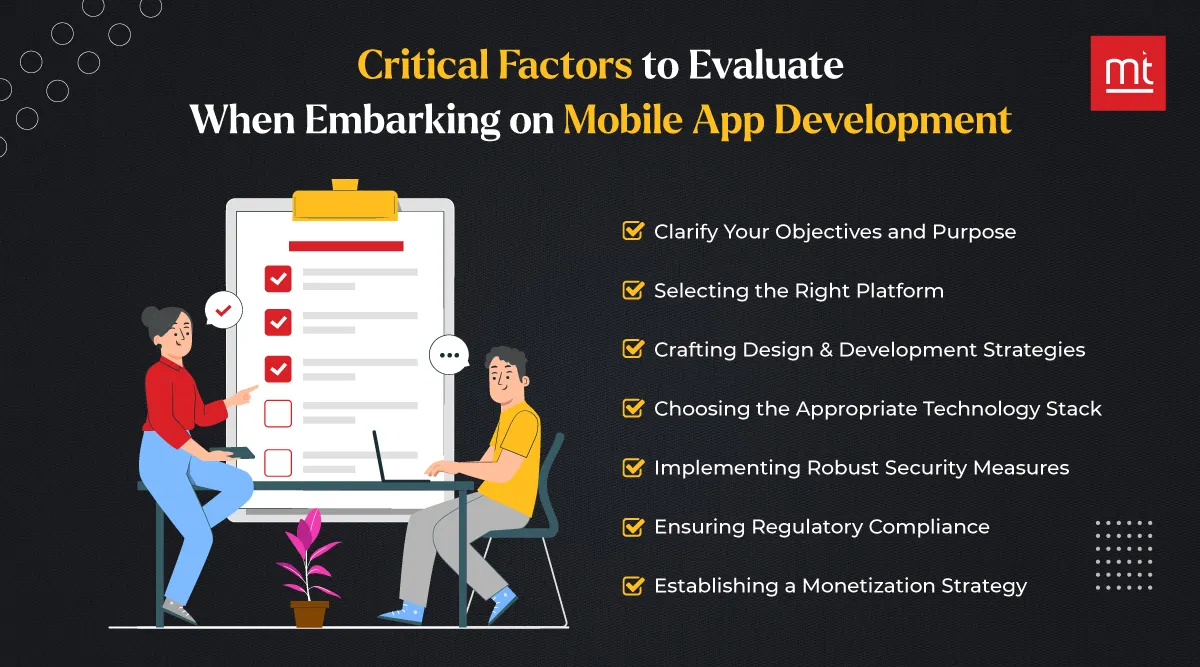
Clarify Your Objectives and Purpose
The purpose of the app is crucial in setting the roadmap, planning the rollout phases and determining the target audience. It is the key to ensuring a smooth app development process. You will bring value to your users only when you are aware of the goals and purpose. You must start your development with a clear purpose.
Selecting the Right Platform
The platform choice is an essential part of your development process. Whether you are planning a native or cross-platform approach will determine the frameworks and tools to use. You can use the features, functionality and user demographics to choose the platform. Your platform choice also depends on your short-term and long-term goals.
Crafting Design & Development Strategies
You must study the audience and create the design strategies during the planning phase. Your user experience and interface design strategies must follow the design guidelines or principles. You must also define the methodologies and timelines for both stages.
Choosing the Appropriate Technology Stack
Selection of your technology stack is pivotal in ensuring successful app development. You must look into your business goals, app development requirements and chosen approach. This can help plan the frameworks and tools required to create the solution.
Implementing Robust Security Measures
You must encrypt the database for secure movement. You should also implement secure and top-notch coding practices for the best outcomes. Patching your application with updates can guarantee extensive security for the application.
Ensuring Regulatory Compliance
You must comply with the data protection and privacy laws. It is crucial to enhance your privacy standards to meet the stated guidelines. Moreover, using the proper data guidelines, you can increase the trust of your audience.
Establishing a Monetization Strategy
You must plan your monetization strategy. It should be aligned with your goals. You can choose in-app purchases or subscription models to monetize the solution.
How ManekTech Can Transform Your Mobile App Idea into a Functional Reality?
ManekTech is a leading mobile app development services provider that can engage your customers with a capable app solution.
Here’s how their experts can help you go from an idea to a fully functional application.
- Their in-depth consultations can set the premise for your app development. From identifying the goals to determining your target audience, they will side you with at every step.
- The team’s undisputed expertise in building applications for iOS and Android can accelerate your success. They can offer cross-platform and native app solutions.
- The team understands the importance of personalization in design and development. They customize the solutions to meet user requirements and interaction requirements.
- From tech stack selection to enhancing accessibility, the team offers exceptional solutions to enhance the user’s experience.
- By implementing top-notch security measures, they aim to deliver well-guarded and highly-protected solutions.
- They incorporate the agile methodology for short iterations and well-tested app solutions. They follow all the app development steps to release a delightful solution.
Your users will get usable and user-centric app solutions as the team continuously works towards enhancing the software.
Conclusion
Mobile apps can transform your business by making it accessible and connected with the users. However, the landscape is diverse and ever-evolving. To match the dynamic growth, you must follow the defined process and adopt an agile methodology.
Defining the niche, goals and requirements can tighten the scope, which helps deliver a quality solution. Moreover, it can also help define the features and functionality for quicker releases.
You must partner with a mobile app development company to navigate the landscape. Their expertise and experience can contribute towards developing an experiential application.
ManekTech is a leading business in this niche. You can connect with our team via Email or phone to take your idea to the next level.
Frequently Asked Questions
1. What are the key stages of the app development process?
Ans: Ideation & planning, design, development and testing are crucial stages of app development.
2. How do I choose the right mobile app development company for my project?
Ans: You must consider the following factors when choosing mobile app development company
- Company’s experience
- Their portfolio
- Communication skills
- Technology stack
- Client reviews
3. How much does it cost to build an app?
Ans: The total cost of building an app depends upon the complexity, features, team’s expertise and location. It may cost your business anywhere between $10k and $50k to build a simple application. As the complexities increase, app development cost goes up.
4. How much time does it take to develop an app?
Ans: It can take anywhere between a few months to a year to build the mobile application. You must specify the timelines for the project in advance.
5. Is it hard to create an app?
Ans: App development can be challenging as it involves several aspects such as design, security implementation and database management. You must move through various stages to release the perfect solution. However, you can overcome this challenge by using suitable tools, frameworks and infrastructure.
About Author
Subscribe to Our Newsletter!
Join us to stay updated with our latest blog updates, marketing tips, service tips, trends, news and announcements!

